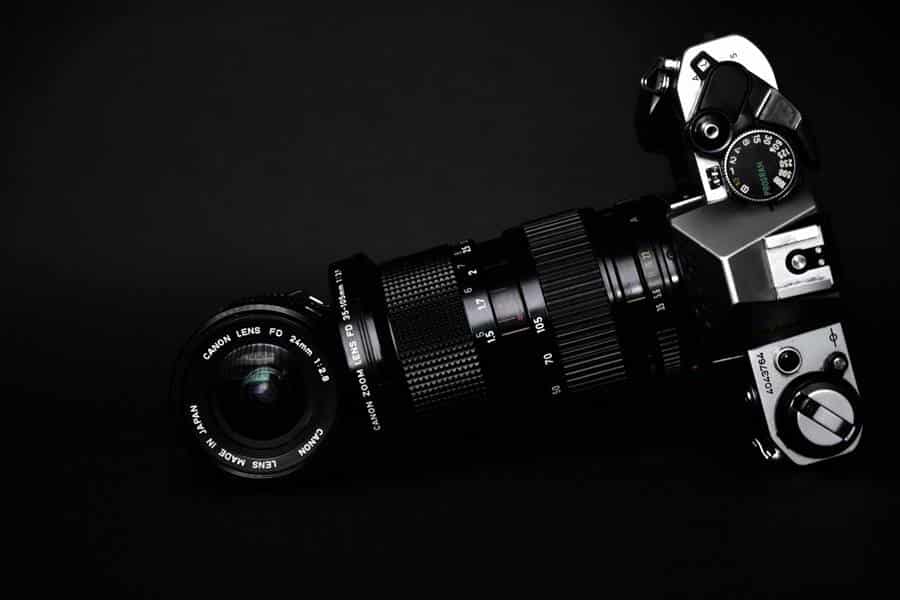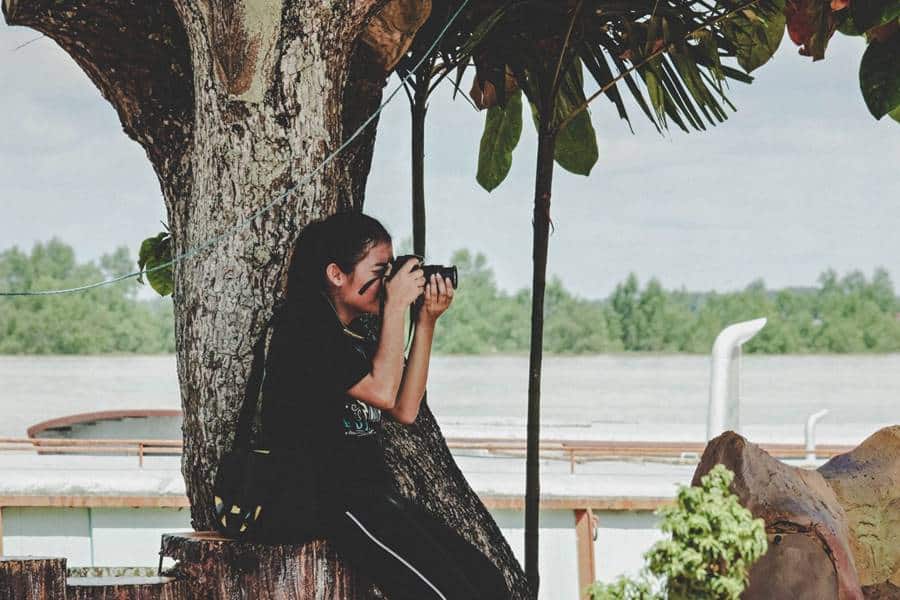Samyang has specially designed a range of six autofocus lenses suitable for Full Frame Sony or Canon EOS R hybrids. Announced in May 2020, the Samyang 85mm 1.4 Canon RF mount available at a low price is Samyang’s second AF lens for Canon.
Not too bulky nor too heavy, this 85mm Samyang offers excellent grip. No programmable setting ring here (I’m not a big fan anyway). The only control is the AF/MF switch, well placed in the right place. As for the design: it is instead very successful. What do you think?
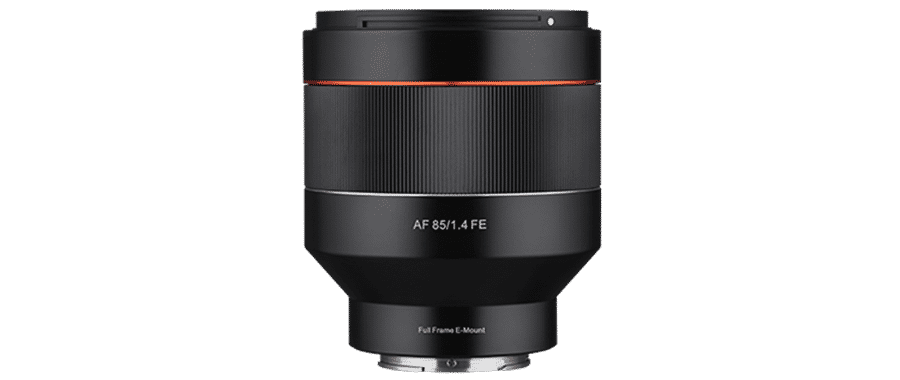
What I find interesting with this Samyang RF 85mm 1.4 AF combines a large f/1.4 aperture and a compact design, rather than a light frame. This is too rare because many 85mm f/1.4 are almost too bulky. So unfortunately too cumbersome too, which dissuades photographers from taking them to the field.
To finish the presentations, its design is quite elaborate, with 11 elements in 8 groups, including four high refractions (HR) lenses and a low dispersion (ED) glass lens. Its 9-blade diaphragm should produce a pleasant bokeh which I let you appreciate in my example photos.
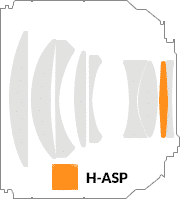
On the Autofocus side, “two ultrasonic motors manage the AF while silently and quickly by moving a single optical unit.” Alright: we’ll test that. Seals provide essential protection for the Samyang RF 85mm f 1.4 AF against bad weather: well done.
We can say that the Samyang RF 85mm f/1.4 AF forms a “fabulous team” with the Canon EOS R6. Whose stabilized sensor will bring that little “extra soul’, which will facilitate the work of beginners. Even in female hands, this 85 mm remains of reasonable size and is easy to hold.
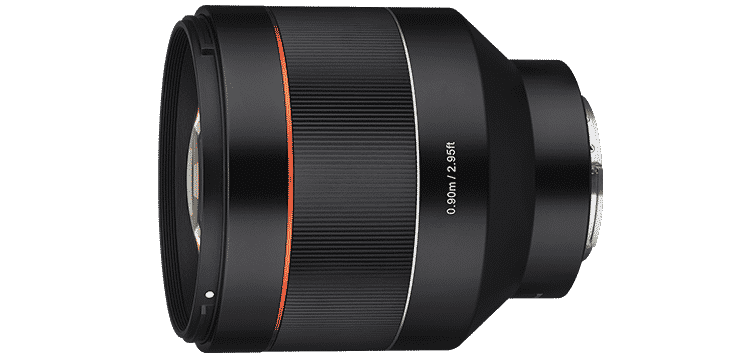
Construction, Quality and Design
When you first get started: without being a lightweight, the Samyang RF 85mm f/1.4 AF seemed to me “neither too big, not too long.” With 584 gram only, for 9.7 cm long: it remains a size say very reasonable for an 85 mm f/1.4. Thanks to this kind of lens, we begin to feel interested in a Full Frame mount Mirrorless.
Unlike the old models of the Korean brand (around 2008), the metal construction has become superb and reassuring: the lens seems solid, built to last. A large plastic focus ring is quite pleasant to use. And the design is exquisite and clean. We are almost in the premium for a mid-range price. Add to this that the lens is tropicalized, we notice a rubberized seal at the back of the frame.
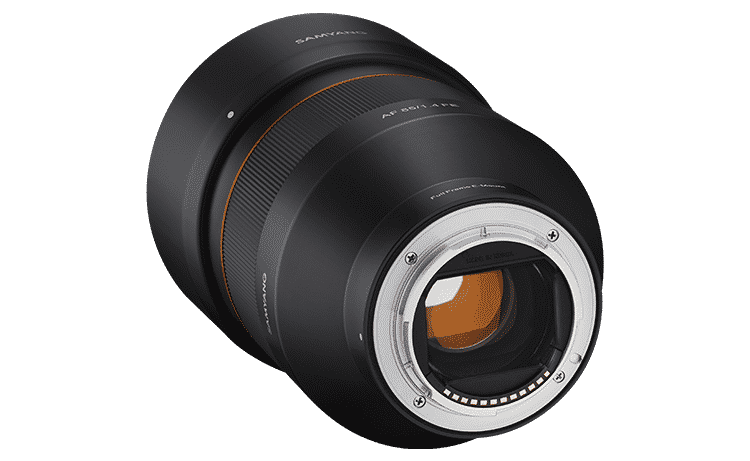
I like to find a reasonable filter diameter of 77 mm at the front: like most Canon EF Pro zoom lenses. Which makes this diameter common and inexpensive; besides, you probably already have several filters of this diameter.
The AF/MF button placed on the left is firm enough. Once in Manual Focus, a large ring electrically controls the Canon EOS R focusing aid “Forks” (a very efficient and attractive device). But I notice the absence of the distance scale (which usually appears at this time with RF lenses when used in the MF position. Certainly a relative impossibility of communication between the lens and the device).
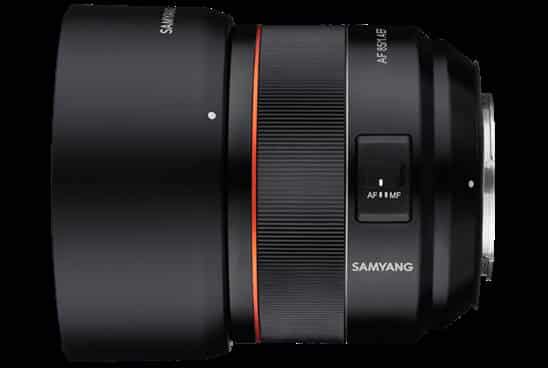
The good idea is to have this AF/MF button placed in the axis of the “white” mark used to orient the lens when mounted on the camera (this is also the case with specific Canon RF lenses). The AF/MF button will serve as a tactile cue (more effective than the white cue) when you want to change the lens in the dark.
And I take this opportunity to recall this little parenthesis that has nothing to do with this Samyang: I noticed that with Canon RF lenses and EOS, I still have a little trouble visualizing the right position lenses when I change them in the dark. This is because the old “raised redpoint” of EF lenses for reflex cameras has been replaced by a simple red mark, which is no longer “raised” and which I find too discreet. Therefore, the solution consists of using the AF/MF button as a marker (visual and tactile). See to sticking a small red sticker in the right place.
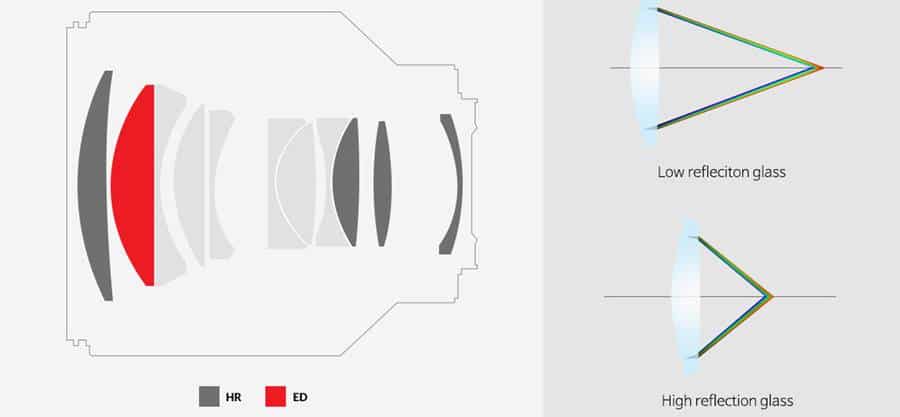
A Pleasant Grip
The Samyang 85 1.4 AF Canon RF mount is very well balanced: this is important for a lens that you may want to use for street photography (not just studio portrait).
As it does not sting with the nose, it remains suitable for a low grip: in prolonged counter or one grabs the handle “like a pickaxe handle” and or one releases with the thumb (placed on the trigger) while framing the screen.
With only 584 grams for 9.7 cm, the Samyang RF 85mm is not too big nor too long. It is almost twice as light as the incredible Canon RF 85 mm f/1.2 L USM, weighing 1,190 grams, and is a professional lens.
If you’re used to roaming around with the excellent RF 25-105mm f/4 L IS USM zoom (700 gram), You’ll notice that the Samyang 85mm is a bit shorter and a bit lighter, which will encourage you to use it almost as often as your basic zoom.
The diameter of its barrel is a few millimeters larger. The two share the exact diameters of filters and 77 mm lens caps, which are interchangeable and much more practical. The Samyang is also delivered with an excellent “clip” cap like the barrel cap.
Competitor of Samyang 85mm 1.4 Canon RF Mount Lens
But (soon), it will above all be necessary to compare the size of this Samyang RF 85 mm f/1.4 AF to that of the recent Canon RF 85 mm f/2 Macro IS STM, which is offered at the same meager price. Canon’s RF 85mm f/2 only opens at f/2, but it is even lighter, with only 500 grams (14% lighter). A perfect surprise, and it’s nice to see that Canon has finally understood what most photographers expect. Canon has decided to give a natural successor to the ancient (and much appreciated) EF 85mm f/1.8 USM; we will see it soon.
It is, therefore, a safe bet that this Canon RF 85mm f/2 Macro IS STM will be an essential lens and a strong opponent for the Samyang RF 85mm AF. It will probably benefit from two fascinating advantages: the integrated IS stabilization (at least for beginners). And a minimum focusing distance of only 35 cm will significantly increase the background blur (the bokeh increases by reducing the focusing distance). In comparison, the Samyang is satisfied with 90 cm, which I find could be improved.
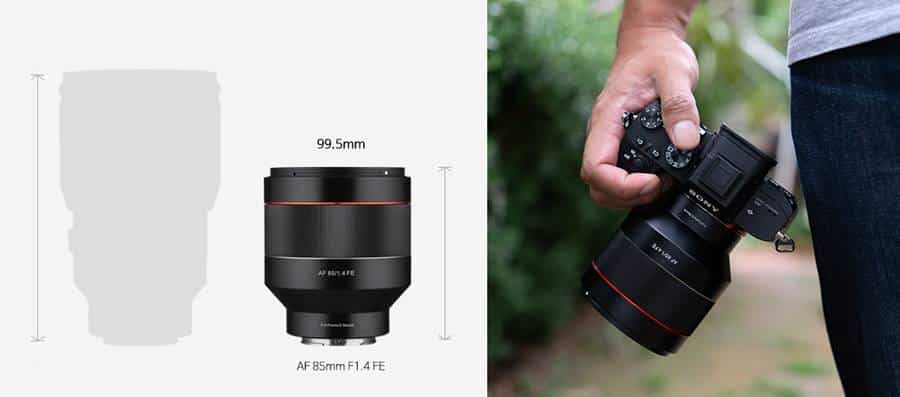
Beautiful metal construction for the only two Samyang AF in RF mount, except for the focusing ring, which remains rigid plastic (no rubberized feel, unlike Canon).
I still want to specify that I have for my EOS 5D camera a Canon EF 85mm f/1.4 lens (950 gram for 10.54 cm long) that I like much, which is also one of the most recent professional EFs. Also, it is one of the most efficient lenses I compared with the Samyang by placing it on the EOS 5D R, thanks to the adapter ring.
Unfortunately, the addition of this EF/RF ring increases its weight by an additional 272 grams. We thus arrive at a total of 1222 grams (i.e., more than double the weight of the Samyang). Add about 2.4cm of ring length, which, when mounted on an EOS R: brings the total length to around 13 cm (approximately 3cm longer than the Samyang).
Faced with this rather long and somewhat unbalanced assembly towards the front: we can see the interest of the new RF versions, which benefit from new optimized optical formulas. What a long way since 2017.
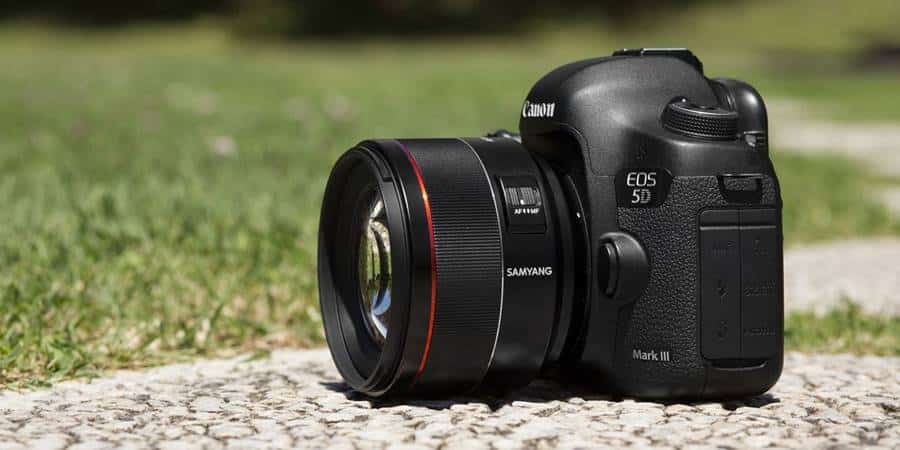
The weight and length savings allowed by the Samyang RF 85mm f/1.4 AF or Canon RF 85mm f/2 Macro IS STM is welcome. And I will probably sell my EF 85mm f/1.4 L IS USM, therefore. Combined with the incredible advancements in AF (with eye-tracking) on the latest generations of Full Frame hybrids, it has almost become a cinch to shoot super-wide aperture portraits. While not long ago: it was still a challenging exercise, even for professionals.
Ultimate and final comparison (just for the sake of form): the Samyang RF 85mm f/1.4 AF is almost twice as light as the Sigma 85mm f/1.4 Art, which weighed 1,131 gram for a length of 12.6 cm, and which was very (too) imposing. Yet it was one of the best 85mm f/1.4 reflexes that I have tried: but I now find it outdated.
No Stabilization in the Lens, Okay?
Of course, this Samyang RF 85 mm f/1.4 AF does not have any stabilization device in the lens (unlike the small Canon RF 85 mm f/2 Macro IS STM). It will therefore be more comfortable on the EOS R5 and R6 than on the EOS R.
However, I tested it on both devices, and I do very well without stabilization (I was used to the old Sigma 85mm f/1.4 unstabilized). Since I know how to respect the rule of “One on the focal.” You should be fine too because you are not more stupid than me. It will suffice to forbid you speeds slower than 1/100 sec. And “breathe well” before triggering by blocking your breathing, feet a little apart.
As you can see from these few examples below: I was able to take very sharp images at reasonably low speeds, up to 1/25 sec freehand (without a foot): the first on the left. However, I preferred to “ensure” an evident landscape while remaining at a more traditional 1/200 sec (right image). You can also click on it to assess the sharpness. For this purpose, I exported these images in 3000 pixels. On the enlarged view, a second click on the round button (visible at the top right of the image) will suffice.

A Design Specifically Intended for Full Frame Hybrids
We would have possibly appreciated that the lens hood (in plastic) was a little shorter and secured by a latch. However, it holds well in place. The red border is reminiscent of the L Series lenses from Canon: Samyang could have refrained from using this “code,” generally reserved for professional models (but we will forgive them for this little daring).
The design of the Samyang 85 f/1.4 AF Canon RF Mount is a specific design for Full-Frame hybrids. And this is not a variation of a lens designed for SLRs. Moreover, there is a Samyang 85mm f/1.4 Autofocus EF mount for EOS SLRs, but it has very different: it is strangely “very short.”
A bit like Sigma already offers, I suppose that this lens should receive Firmware updates (accessible on this page), thanks to a physical accessory: the Samyang Lens Station RF. A base is similar to this Samyang Lens Station Sony E mount.
General Image Quality
The geometry is quite good: hardly a slight barrel distortion effect. This is usually not a concern on 85mm lenses. Chromatic aberrations (if any) are inconspicuous enough to appear invisible.
The sharpness in the center of the image is already good from the largest aperture (f/1.4). And it becomes downright excellent from f/2.8: that’s reassuring. And on the edges, the quality is also quite good at f/1.4 and gradually improves, peaking at f/11. Beyond that, it starts to soften a bit because of diffraction.

Of course, there is a lot of vignetting in the corners at the widest opening, but it is pretty clear all the same. The vignetting (which is easy to correct in post-processing) gradually fades and disappears entirely at f/5.6.
As you can see from the bottom line views, closing at f/8: there is a lot of detail everywhere. Including on the edges of the image. And a little less on the view at f/16, where the diffraction starts to be a little noticeable.

Considering the quality of this sharpness: to make the landscape, I will prefer the resolution of 30 megapixels of the EOS R (above) to exploit the lens’s sharpness, preferably to the 20 Mpix of the ‘EOS R6. This is because I know how to control my minimum speed and deal with the non-stabilization of the sensor on the EOS R.
And because I also know how to overcome the minor ergonomic flaws of the EOS R. I recall in passing that I have personalized the keys; for example, the Exposure Memorization key allows me to change ISO. And the AF/On key will enable me to alternate On-Shoot and AI-Servo Modes. However, I would recommend all beginners to prefer the EOS R6 (for its exemplary ergonomics) rather than the EOS R.
Do not expect to escape on this 85mm Samyang the phenomenon of “focus breathing”: remember that this is an effect of change of field angle (or change of focal length) when changing the focus distance point. If you want to escape it, you’ll have to spend a lot more than that and go for the Canon RF 85mm f/1.2 L USM. It will mainly be the videographers who will pay attention to this “detail” (this remains a detail for photographers).
There is also a little flare facing the sun, but here is a fault, which will please some. I let you discover some images below, taken with the Canon EOS R of 30 Mpixels. I have not carried out any scientific tests on the test pattern, my final opinion being that it is “quite clean enough for what I want to do with it.”
No Correction of Vignetting in the Box
The camera bodies EOS R EOS EOS R5 and R6: do not propose fixes vignetting, chromatic aberration, or geometry for JPEG taken with this model 85mm. Unlike Samyang 14mm f/2.8 AF RF mount.
What I don’t find annoying, as I work in RAW. However, those who film, or work in JPEG, will prefer a Canon model to benefit from these improvements in camera.

You can see below on the first four images: that the EOS R6 well detects the presence of the Samyang RF 85mm f/1.4 AF. But that image corrections are not available to that.
Photo n° 10: In Video Mode on the EOS R6 as on the EOS R: I noticed that the Correction of distortion in the camera is indicated as “not available” (in 4K mode as in Full HD). While Chromatic Aberration Correction and Vignette Correction are well marked as “Available.”

A Minimum Focusing Distance of 90 cm
The average focusing distance of 90 cm would perhaps be the small weak point of this lens, especially for photographers who appreciate very tight portraits. I am often criticized for cutting off heads, but I am not shocked (well, each his style).
Therefore, it will be necessary to do with these 90 cms, which frustrate me a little (without being prohibitive). But in any case, nothing prevents cropping your images afterward. If you want a higher magnification, it will undoubtedly be necessary to try the Canon RF 85mm f/2 Macro IS STM offered at the same meager price. Logically: at 90 cm from your subject, it will produce less bokeh at f/2 than the Samyang at f/1.4.
I have personally compared my Canon EF 85mm f/1.4 L IS USM, a focus distance of 85cm (which was already 10cm better than the 85mm f/1.2 L USM II). Well: these five small centimeters, it’s not a big difference on paper. But you can feel it a bit when you shoot it, so I let you imagine if the focus distance drops to only 35 cm.
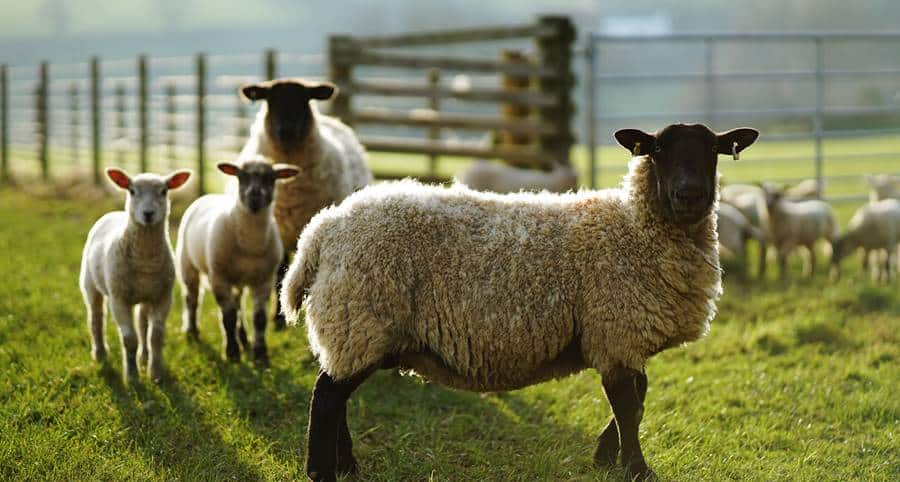
I focused on the Canon logo of the EOS R6, each approaching as close as possible: just before the AF stopped working. Besides the difference in magnification of the subject (which is not huge), it also seems to me that I noticed a bit more “marked” bokeh in the background. It’s light, but it’s theoretically normal: the more significant the distance focus is reduced, the more the blur increases.
Aperture f/1.4 VS f/4
Why would you need to supplement your 24-105mm f/4 with an 85mm wide aperture? Well, the answer is possibly below:

Efficient Autofocus
The AF system of this Samyang is relatively fast, ultra-precise, and very quiet, which makes it pleasant to use. The AF works perfectly with the eye detection and tracking system of the Canon EOS R and EOS R6 with which I tested, and it’s pretty great for portrait lenses. We do not have the impression that this is a lens of another brand. What a long way Samyang had come since that time when they only produced manual focus lenses.

Conclusion
Bokeh galore, sharpness more than enough, a weight and a size contained a reasonable budget, and efficient autofocus: this is the program of an excellent lens for most photographers. And for me too.
We will therefore easily forgive the Samyang 85 mm: a minimum focusing distance not exciting, a strong vignetting at the large aperture (which is very easy to correct if necessary), and a particular sensitivity to Flare in the face of the sun (is it really? a defect? Some even seek after it).
For owners of EOS R or RP (the first generations without a stabilized sensor), it will be more difficult to ignore the lack of stabilization in the lens. Although: with a bit of method and know-how, we will always get by. If you are more of a beginner and do not have sensor stabilization (EOS R or RP): then the Canon Rf 85 mm f/2 IS STM will tempt you because it is stabilized.
Precisely, the latter was not available at the time of my Samyang test, but clearly, these two 85 mm there are aimed at the same audience. And the choice between the two is going to be difficult.

See The Price & Buy it on Amazon
The availability of this 85mm Samyang, just like that of the 14mm ultra-wide-angle, is, therefore, “to be considered” for Canon EOS R users. Along with the Canon RF 35mm f/1.8 IS STM, the new Canon RF 85mm f/2 IS STM and RF 600 and 800mm (announced this July)…
We do not yet have an extensive choice of “cheap” fixed objectives so far. Indeed, we are a little more spoiled on the entry-level zoom side with two RF 24-105 mm and one RF 24-240 mm… But often, the amateurs of fixed focal lengths will be forced to use EF lenses mounted on the EF / RF adapter ring… Except for the 85 mm.
Pro
- Aesthetic design
- Anti-runoff construction
- Fast and precise autofocus
- Excellent Pique
- Negligible distortion
- Fairly reduced Flare
- Controlled vignetting beyond f/2.8
- Nice bokeh
- Reasonable price
Cons
- A minimum distance of M.AP. medium (90 cm)
- No integrated stabilization
- No programmable ring (not that annoying)
- Strong enough vignetting at f/1.4 (easy to correct)
Here is a very nice lens that is not too expensive: as there are not many in RF mount, this Samyang 85mm f/1.4 AF could become a must for Canonists… Especially since its design is a great success.
Its extensive aperture of f/1.4 is an excellent asset, combined with excellent general sharpness. Some EOS R or RP (this first generation being devoid of stabilized sensors) may regret the absence of a stabilization device integrated into the lens. Although: with a bit of method and know-how, we will always get by.
On the other hand, owners of EOS R5 and R6 will benefit from stabilizing the sensor. The autofocus of this 85 mm, proved to be very effective: as much with the EOS R, as with the EOS R6. It is a very positive point.
Note that the Samyang 85mm f/1.4 AF does not have an adjustment ring (programmable). This does not bother me since it is now easy to program many keys on the EOS R. As for the EOS R5 and EOS R6: they already have three knobs (front, top, and rear).
I have not been able to compare (for the moment) this Samyang model opening at f/1.4 with its main competitor: the Canon RF 85 mm f/2 IS macro STM which only opens at f/2 but has two exciting advantages. A shorter focusing distance and onboard stabilization (which can work “in conjunction” with the stabilized sensor of the EOS R5 and R6).
The average focusing distance of 90 cm would perhaps be the small weak point of this Samyang 85 mm f/1.4 AF. Especially for photographers who appreciate very tight portraits, or for photo enthusiasts gastronomic, for example. But that will not bother everyone.
In the end, I enjoyed this lens and recommended it to you.
Appendix
A Little History of Samyang: Do not confuse Samyang Optical Co. Ltd: the manufacturer of lenses whose origin dates back to 1972 (company history). Samyang Food, which is an of the biggest ramen maker in Korea: another Korean institution.
Their first lens for SLR cameras was 85mm in 2009. The first 14mm f/2.8 manual for reflex (which I had bought in Canon EF version) had made the Samyang brand widely known in Europe (called Rokinon in the USA) from 2010.
From 2014 Samyang also offered Micro 4/3 lenses. Then from 2018, a full range of Mirrorless Full Frame lenses is under development.
Technical Specification of Samyang 85mm F/1.4
| Focal length | 85 mm |
| Opening range | F1.4 – F16 |
| Image Coverage | 24x36mm |
| Field of view | 28.9° |
| Focus Range | 0.90 m to infinity |
| No. blades diaph. | 9 |
| Construction | 11 elements in 8 groups, 4 high refractions (HR) lenses, 1 extra-low dispersion (ED) lens. |
| Max magnification | 0.11x |
| Length | 99.5 mm |
| Diam. max Diam. filtered | 88 mm 77 mm |
| Mount | Canon RF |
| Seals | Yes |
| AF / MF switch | Yes |
| Weight | 582 gm without caps and lens hood. |
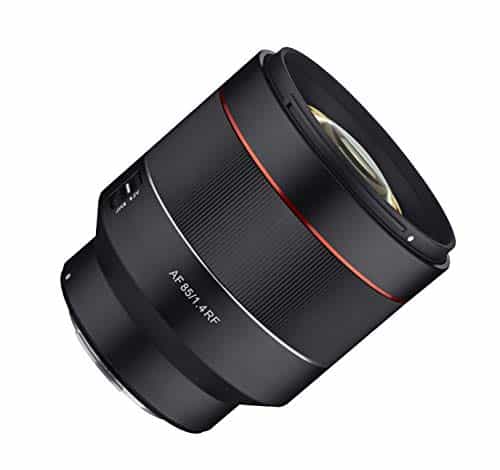
TECHNICAL SHEET
| Sensor coverage | Full format (full-frame – 24x36mm) |
| Opening range | F1.4 – F22 |
| Optical construction | 11 elements 8 groups |
| Minimum focus distance | 0.9m |
| Field of view | 28.9° FF |
| No. of the diaphragm | 9 |
| Weight | 568gm |
| Guarantee | 2 years |
| Filter diameter | 77mm |
| Accessories included | Plugs, Carrying case, Sun visor |
| Focal | 85mm |
| Focus | Autofocus (AF) |

Editorial Rating: Samyang 85mm f/1.4 AF Canon RF Mount
| CONSTRUCTION AND FINISH | 81% |
| HANDLING AND ERGONOMICS | 88% |
| DISCRETION, COMPACTNESS, SILENCE, AND WEIGHT | 82% |
| GENERAL OPTICAL QUALITY | 86% |
| IMAGE SHARPNESS | 90% |
| AUTOFOCUS RESPONSIVENESS AND SPEED | 95% |
| FEATURES AND VERSATILITY | 80% |
| OPTICAL RANGE (OTHER LENSES IN THE RANGE) | 90% |
| PRICE RELEVANCE | 92% |

